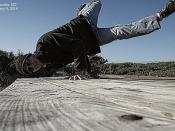LYON FANNE CASE
Options and Futures - Dec 2004
Introduction:
We divided our report in three parts, which correspond to three steps we made to solve the problem of the case. In order to help Professor A. Lyon Fanne to decide whether he should close his position or not on the future contract, we first analysed the research made by the professor about the "January effect", then we focused on his investment strategy and finally, thanks to the two precedent parts, we took a decision.
Step I. Research on the "January effect"
Let's come back on the analysis that Professor A.Lyon Fanne made on the January effect. Thanks to the professor's research, reported in the exhibits, we can analyse 60 years of data (from 1926 until 1985) and make some assumptions to build a kind of model which leads to the final strategy.
First, we can remark that over 60 years (from January 1926 until December 1985), small firms provide a higher return in January (higher than the rest of the year and higher than the companies which are incorporated in the S&P500 index).
Indeed the table ë Strategy comparisons small-firm stocks and S&P500 geometric mean annual return û in Exhibit 1 shows us that you obtain an annual return of 15.77% when you hold the small firm portfolio during January and S&P500 index the rest of the year, whereas you obtain a return of 12.56% when you buy and hold the small-firm portfolio and only a return of 9.84% when you buy and hold the S&P500 index. Moreover, even during a downturn period, like January 1926 - December 1934, the small firms portfolio still provides a significant higher return in January. The S&P500 index provides a return of 2.02% during this period, the small-firms...


